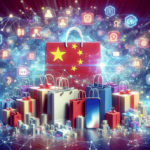Understanding the Direct-to-Consumer (DTC) Ecommerce Model
Direct-to-Consumer (DTC) is a business model that involves selling products directly to consumers through your own website or other online channels, eliminating the middleman or traditional retail stores. This approach offers significant benefits, including increased control over your brand image, enhanced customer relationships, and access to valuable customer data. According to Statista, global DTC ecommerce sales are projected to continue their upward trajectory, highlighting the growing importance of this model in the retail landscape.
The Role of Third-Party Logistics (3PL) in DTC Ecommerce
Choosing the Right 3PL Partner
One crucial consideration for DTC brands is selecting an appropriate third-party logistics provider (3PL). A reliable 3PL can manage everything from warehousing and shipping to customer service and returns, which is especially beneficial for smaller brands lacking the resources to handle these tasks internally. It's essential to choose a 3PL partner that aligns with your brand values and business goals.
Technology Capabilities of 3PLs
Advanced technology in a 3PL can offer real-time visibility into inventory levels, shipping status, and customer data, enabling DTC brands to make informed decisions and enhance the overall customer experience. A user-friendly online portal further simplifies the management of logistics operations and shipment tracking. For more insights into selecting a 3PL, refer to the Investopedia guide on 3PL.
Benefits and Challenges of Transitioning to DTC Ecommerce
Pros of Partnering with a 3PL
- Scalability: Easily scale operations without the need for significant capital investment.
- Expertise: Leverage the specialized knowledge and experience of logistics professionals.
- Efficiency: Streamline operations to reduce costs and improve delivery times.
Cons of Partnering with a 3PL
- Control: Less direct control over order fulfillment and shipping processes.
- Customization Limitations: Potential restrictions on packaging and branding customizations.
- Additional Costs: Outsourcing logistics introduces costs related to storage, handling, and shipping fees.
While partnering with a 3PL can offer numerous advantages, it’s important to carefully weigh these against potential drawbacks to determine the best approach for your business.
Strategies for Building and Growing a Successful DTC Brand
Developing a Strong Brand Identity
Creating a compelling brand identity is crucial for differentiating your business in the competitive DTC landscape. This involves establishing clear brand messaging, visual aesthetics, and a consistent voice across all channels. A strong brand identity fosters trust and loyalty among consumers.
Effective Marketing and Promotion
Implementing effective marketing strategies is essential for driving traffic and sales. Key tactics include search engine optimization (SEO), social media advertising, email marketing, and influencer partnerships. Utilizing data-driven marketing approaches can enhance targeting and personalization, leading to better engagement and conversion rates.
Optimizing Your Ecommerce Website
Your ecommerce website serves as the primary sales channel in the DTC model. Ensuring that your site is user-friendly, mobile-optimized, and has fast loading speeds can significantly improve user experience and search engine rankings. Incorporating relevant keywords and high-quality content also plays a vital role in attracting organic traffic.
The Future of DTC Ecommerce: Trends and Predictions
Increased Personalization and Customization
Consumers are increasingly seeking personalized shopping experiences. DTC brands are leveraging data analytics and artificial intelligence to offer customized product recommendations and personalized marketing messages. According to a report by McKinsey, personalized marketing can deliver five to eight times the ROI on marketing spend and can lift sales by 10% or more.
Emphasis on Sustainability and Ethical Sourcing
There is a growing demand for sustainable and ethically sourced products. DTC brands that prioritize environmentally friendly practices and transparent supply chains are more likely to attract and retain conscientious consumers.
Advancements in Mobile and Social Commerce
The rise of mobile commerce continues to shape the DTC landscape. Brands are optimizing their websites and developing mobile apps to cater to the increasing number of consumers shopping via smartphones. Additionally, social commerce on platforms like Instagram and Facebook is becoming a significant sales channel, allowing brands to reach consumers directly through social media.
Case Studies: Successful DTC Brands
Warby Parker
Warby Parker disrupted the eyewear industry by offering stylish glasses directly to consumers online at affordable prices. Their virtual try-on feature and home try-on program enhanced the online shopping experience, making it convenient and personalized. According to Forbes, Warby Parker's innovative approach has been instrumental in building a loyal customer base and expanding into brick-and-mortar stores while maintaining a strong online presence.
Glossier
Glossier transformed from a beauty blog into a cult-favorite DTC beauty brand renowned for its community-driven approach. By fostering strong social media engagement and encouraging user-generated content, Glossier has built a dedicated following. Their curated product selection and emphasis on authenticity resonate deeply with their target audience, as highlighted in Business Insider.
Conclusion: Is Going DTC Right for Your Brand?
Transitioning to a DTC ecommerce model offers numerous advantages, including greater control over branding, enhanced customer insights, and the potential for increased profitability. However, it also presents challenges such as the need for robust logistics, effective marketing strategies, and the ability to manage customer relationships directly. It's essential to conduct a thorough analysis of your brand’s capabilities, resources, and market position before making the shift. By carefully considering the pros and cons and implementing strategic approaches, your brand can successfully navigate the DTC landscape and achieve sustainable growth.






















